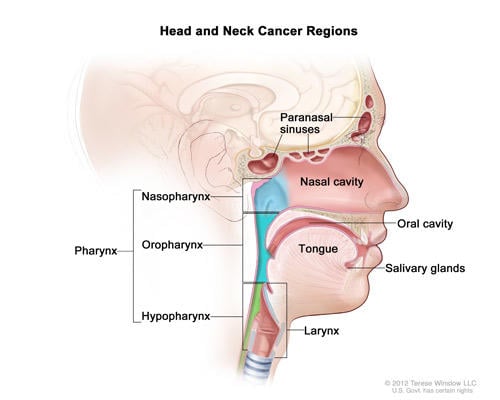Head and neck cancers, encompassing malignancies of the oral cavity, larynx, pharynx, nasal passages, and salivary glands, constitute a significant health burden in India, often overshadowed by other cancer types. Oral cancer, particularly prevalent among Indian men, is strongly linked to tobacco and alcohol consumption. A critical challenge lies in the frequent oversight of early symptoms, leading to delayed diagnoses and hindering effective treatment. These cancers, when detected in their initial stages, offer significantly higher chances of successful treatment and improved patient outcomes.
Early detection hinges upon recognizing subtle yet crucial warning signs. Persistent sores, unusual red or white patches in the mouth, difficulty swallowing, vocal changes, neck lumps, unexplained weight loss, and persistent unilateral ear pain warrant immediate medical attention. These symptoms may manifest weeks or months before a formal diagnosis, underscoring the importance of regular ENT and dental check-ups. Delayed diagnosis often stems from dismissing these symptoms as minor or attributing them to tobacco use. Targeted education for both the public and healthcare providers about these often-overlooked symptoms is essential for timely intervention.
The risk landscape for head and neck cancers in India is dominated by tobacco use, both smoking and chewing, often exacerbated by alcohol consumption. Human papillomavirus (HPV) infection is an emerging risk factor, particularly for throat cancers, while poor oral hygiene and prolonged sun exposure also contribute. Middle-aged men remain the highest-risk demographic, but younger individuals are increasingly affected due to earlier and more prolonged exposure to these risk factors. The rise of HPV-positive head and neck cancers in non-tobacco users highlights the evolving nature of these diseases and necessitates broader screening strategies.
Suspected head and neck cancers require thorough evaluation by ENT specialists or oncologists. The diagnostic process typically involves a physical examination, endoscopic procedures, imaging studies such as CT or MRI scans, and biopsy for tissue confirmation. Accurate staging, determining the extent of the cancer’s spread, is pivotal for tailoring effective treatment plans. A multidisciplinary approach involving specialists from various fields is crucial for optimal management.
Treatment modalities for head and neck cancers are individualized based on the location and stage of the disease. Surgical intervention, radiotherapy, chemotherapy, or a combination thereof are common approaches. Advances like intensity-modulated radiation therapy (IMRT), targeted therapies, and minimally invasive surgical techniques have significantly improved treatment precision and outcomes. Reconstructive surgery plays a vital role in restoring both form and function, addressing aspects like speech and swallowing, following extensive tumor removal. This comprehensive approach aims to maximize both survival and quality of life.
Beyond mere survival, modern oncology emphasizes quality of life. Post-treatment rehabilitation, including speech and swallowing therapy, nutritional counseling, and psychosocial support, is crucial for successful recovery. Regular follow-up appointments are essential not only for monitoring potential recurrence but also for managing long-term treatment side effects. Prevention and early detection remain the cornerstones of reducing the burden of head and neck cancers. Public awareness campaigns about risk factors, support for tobacco and alcohol cessation, and targeted screening for high-risk individuals are vital for lowering the overall incidence. Self-examination, especially for those with known risk factors, and routine dental check-ups can aid in early detection. HPV vaccination, primarily associated with cervical cancer prevention, also offers protection against oropharyngeal cancers. Integrating HPV vaccination into national immunization programs could substantially reduce the incidence of these cancers in the future. Head and neck cancers are often curable if detected early. Increased awareness among both healthcare professionals and the public, coupled with proactive health behaviors like attending regular check-ups and promptly addressing suspicious symptoms, is paramount in improving outcomes and saving lives. Early detection and timely intervention remain the most effective strategies against these prevalent and often debilitating cancers.


